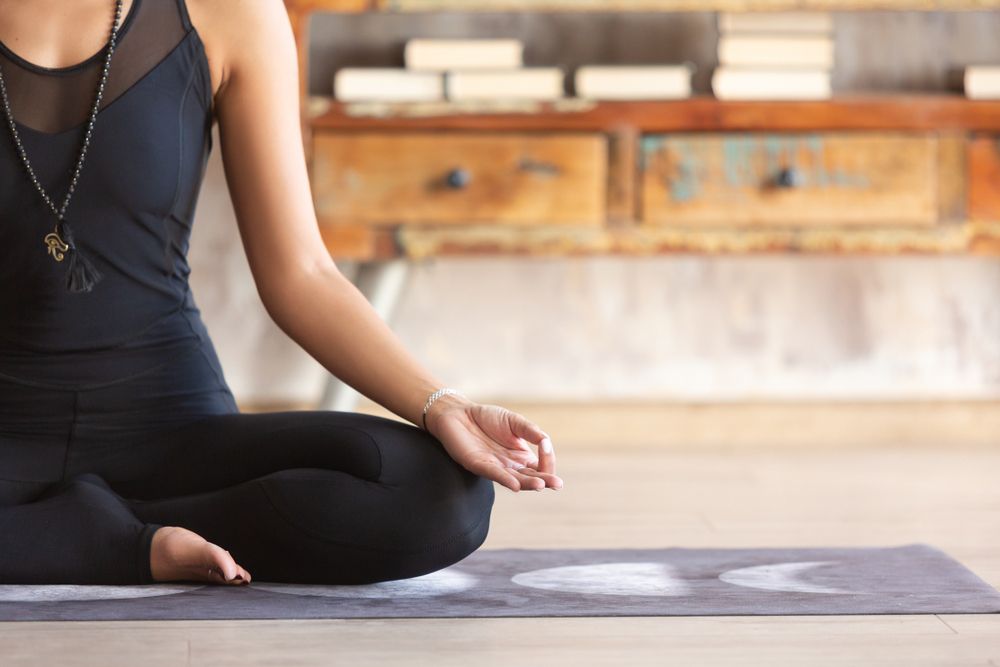Meditation is arguably one of the most beneficial things you can do for your mental health, It’s something that helps give you clarity of mind, and helps promote relaxation too. You might be looking to learn how to meditate at home for many reasons – but if you’ve found your blood-pressure rising, or symptoms of stress creeping in, meditation can help with those things, and just generally give your body and mind a sense of calm. Some of the benefits you might feel after regular meditation are:
- Improved blood circulation
- Deeper relaxation
- Better sleep
- Lower heart rate
- Lower blood cortisol levels
- Less perspiration
- More positive thoughts
- Slower respiratory rate
- Less stress / anxiety
- Less stress

In some countries (mainly big cities) it’s quite common to find guided meditation classes and mediation studios (usually in the same establishments as yoga studios). But if you don’t live in a big town or city, you might be struggling to find a guided mediation class near you. In these cases learning how to meditate at home can be hugely useful.
You might also be looking to how to meditate at home just to make life easier and more convenient. Learning how to meditate at home can really add something positive to your daily routine and schedule, and it means you can achieve mental calm without even leaving the house! For many people, they’re simply more comfortable at home, and want to relax and meditate in their own space and environment.
Anyway – enough talk about why you might be learning how to meditate at home. Now let’s talk about how…
How to meditate at home – setting up your space
You can learn how to meditate at home in any space, but I recommend choosing a space that you find relaxing and calming. Here’s my checklist for finding a good meditate space with your home:
- Is there room to sit comfortably (or lay down comfortably)?
- Does the space encourage peacefulness and calm? (Not a busy kitchen or a noisy front room, for example)
- Is the space quiet?
- Is the space comfortable?
- Is the space free from distractions?
- Is the room uncluttered?
Ideally you’ll want to be able to answer ‘yes’ to all these questions. If you can, then it’s likely you’ve found the perfect mediation space. Don’t worry if you can’t answer yes to all the questions – nobody’s home is perfect, and it’s about finding the best space for you, that is available to you. Have a look through Pinterest for inspiration though – I always find this really inspiring.
I also like to meditate in a bright space because I find it helps with my thought processes and positivity – but this is a completely personal choice. Some people much prefer darker spaces.

Learning how to meditate at home – the technique
For complete beginners, I actually recommend using meditation apps to begin your meditation journey. This is a really great idea, and it’s something I really encourage – as you can be guided through different types of mediation and there are set themes, and types of meditation in the apps. You can learn what you like, and how you you react to these different techniques – which lets you explore and then (eventually) narrow down your preferences.
It can also be very daunting at first learning how to meditate at home, and the majority of meditation apps do a brilliant job of guiding you through the basics in a non-intimidating style. I wrote about the best meditation apps here, if you want to take a read and decide which sounds right for you.
If you don’t want to use an app, or maybe you don’t have access to a smart phone – then the technique and steps below will give you the basics you need to build upon.
Step 1: In your meditation space, sit or lie comfortably. You should sit in a position that lets you relax your body – there shouldn’t be any areas of stress or pressure. A meditation chair (I love this one – it’s SO comfy), or a meditation cushion can help with this. Especially for beginners.

Step 2: Close your eyes and begin to focus on your breathing. Don’t try to control the breathing – just let it happen naturally.
Step 3: As you breathe, let your mind focus on how your body feels during each breath. Pay attention to how the breathing makes you body move, how your chest rises and falls, how your neck feels, how your arms feel.
That’s it! If you find your mind wandering during the meditation, just focus back in on your breathing techniques. Don’t worry about keeping this up for too long to start with – initially, you may only look to meditate for 3 minutes, and then increase it by 30 seconds each day.
When to meditate at home
The ‘When to meditate’ question, is answered by your own needs and wants. Some people find it beneficial to meditate in the morning before starting their day – because it allows them to adjust to the waking hours, and let’s them start the day with a fresh mind and outlook.
Others choose to meditate in the vening because it can help relax them before bed, and encourage better sleeping patterns.
To be honest, when starting out with meditation and when initially starting to learn how to mediate at home, I recommend trying a bit of everything. Try meditating for several minutes throughout the day, and see what impact it has on your mind, your body and your mood. You’ll find it become increasingly obviously when it’s most beneficial for you.




